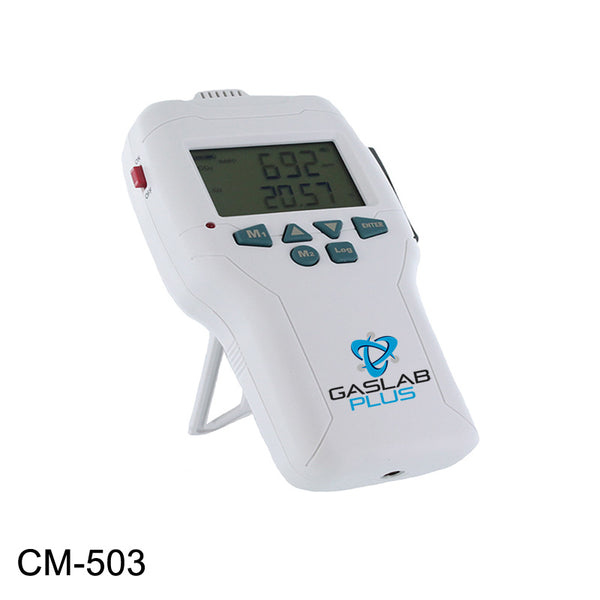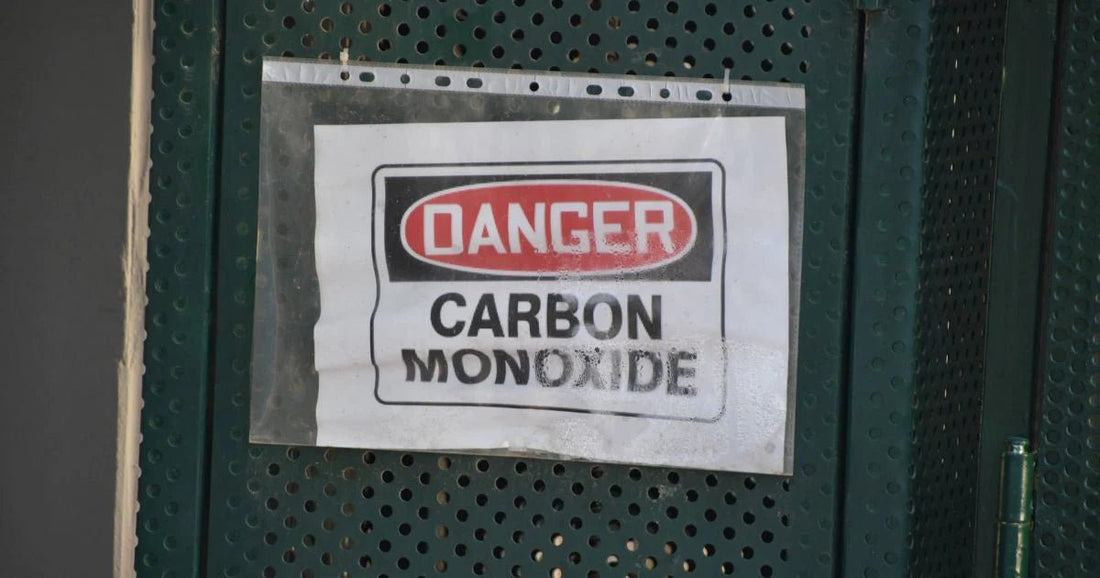
A carbon monoxide (CO) detector cannot detect carbon dioxide (CO2), and a carbon dioxide detector cannot detect carbon monoxide.
While both carbon dioxide and carbon monoxide are odorless, colorless gases that can be harmful to human health, they have different chemical compositions and properties.
Carbon dioxide is a byproduct of human respiration and the combustion of fossil fuels. Carbon dioxide detectors work by measuring the concentration of CO2 in the air and triggering an alarm if it reaches dangerous levels.
Carbon monoxide, on the other hand, is a toxic gas that is produced by the incomplete combustion of fossil fuels such as gasoline, natural gas, and wood. Carbon monoxide detectors use sensors that can detect the presence of CO in the air and trigger an alarm to warn people of its danger.
It's important to use the correct detector for each gas to ensure your safety. Carbon monoxide detectors are widely available in stores, and should be installed in all homes and buildings that use burning for heating. In fact, most modern building codes require carbon monoxide detectors in addition to smoke detectors.
Difference between a CO Detector and a CO2 Detector
A CO detector and a CO2 detector are two different types of devices used to detect different gases in the air. The main differences between the two are:
- A carbon monoxide detector uses an electrochemical sensor that outputs electric current proportional to the amount of carbon monoxide in the air.
- A carbon dioxide detector uses a non-dispersive infrared (NDIR) sensor that measures light in a sample of air. The amount of light that passes through the sample is inversely proportional to the amount of carbon dioxide in the air.
Carbon monoxide is considered a toxic gas.
While CO2 is not typically considered toxic, high levels of CO2 can cause health problems, such as headaches, dizziness, and fatigue.
Where does Carbon Monoxide come from?
Carbon monoxide does not appear naturally in air. It is one of six major pollutants regulated in the United States and in many other places around the world. The amounts of CO around the world can change depending on the country and time of year. For example, in Africa more CO is emitted when there are more agricultural burnings for farming, because fires produce a large amount of carbon monoxide.
In other parts of the world like the US and Eastern China, the highest CO concentrations occur around urban areas as a result of vehicle emissions and industrial factories. CO occurs most often during the incomplete combustion of fossil fuels such as oil, coal and gasoline.
Both CO2 and CO can be found in your home, workplace, and even other places you visit daily, and knowing where concentrations and leakages can occur is very important to overall health and safety. Knowing the dangers and warning sign of gas poisoning can lead to precautionary measure and even safe lives.
Where Does CO2 Come From?
CO2 is a gas that is produced naturally on the planet and is almost never created by humans, except when it is produced by the body as a result of cellular metabolism. It is most commonly formed from fermentation, burning fossil fuels, human respiration and the decomposition of organic matter.
For example, CO2 levels at your weekly meeting in the conference room will rise significantly when the door closes and people begin talking and respiration, and when your fruits and vegetables begin to decompose when your garbage can.
Liquid and solid carbon dioxide, known as dry ice, are widely used as refrigerants in the food and beverage industry.
Can you Detect CO with a CO2 Detector?
The answer is no. CO2 detectors often use infrared sensors to detect levels of gas, while CO sensors main use electrochemical sensors.
Another element to consider is how flammable CO2 and CO can be under the right circumstances.
CO can be a flammable gas in higher dense concentrations, and devices to measure carbon monoxide in these concentrations are normally explosion proof.
The good news is that CO2 is a non-flammable, inert gas with no explosive properties.
Negative Health Effects Associated with Carbon Monoxide and Carbon Dioxide
Another commonplace misinterpretation is that the concentration at which CO and CO2 are deadly is indistinguishable. However, nothing could be further from the truth. Wrong information can be just as deadly as the gases themselves.
OSHA lists danger levels for CO starting at 35 ppm, and for CO2 starting at 5,000 parts per million time weighted average.
Therefore, when sensing these gases, it is important to consider the respective hazardous concentrations in order to detect them properly.
One critical factor is understanding and educating yourself, your families, and your employees about the symptoms for both gases and how they are different in order to arm yourself in the event of an emergency.
Typical symptoms of CO2 exposure include decreased focus, cotton/dry mouth, disorientation, narrowed field of vision, increased heart rate, sweating, fatigue, muscle tremors, and shortness of breath.
CO exposure symptoms begin when CO begins to build up in your bloodstream. When there is too much carbon monoxide in the air, your body begins to replace the oxygen in your red blood cells with CO. Symptoms might include: headache, dizziness, weakness, upset stomach, vomiting, chest pain, confusion and blurred vision. CO poisoning can be extremely dangerous to those who are sleeping, because it is so subtle: some people might have brain damage or die before they even wake up.
What Should I do if I Suspect CO Poisoning?
If you believe you are starting to suffer from carbon monoxide poisoning, the best course of action is to immediately go outside and get fresh air. On your way out the door, try to turn off non-electrical appliances and leave doors open as you go.
Remember that you cannot smell or see carbon monoxide, and that if you suspect poisoning to call 911.
What Should I do if I Suspect CO2 Poisoning?
While CO2 leaks are rare, it is possible for dangerous amount of CO2 to build up in confined spaces under the right circumstances. CO2 poisoning symptoms differ from that of CO2, making it easy to recognize. If you suspect you are experiencing the beginning symptoms of CO2 poisoning, leave the are or go outside.
Importance of Gas Detection
Carbon monoxide is a combustible gas, however, presents dangers other than explosions. The Occupational Safety and Health Administration (OSHA) reminds employers to take precautions to protect workers from carbon monoxide at the workplace.
Especially in colder climates, it is important to monitor levels of CO in the winter months. Casualties result every year from carbon monoxide poisoning, typically while using fuel-burning equipment and tools in confined spaces that lack proper ventilation. When windows and doors are shut to keep out cold air, carbon monoxide can easily build up to dangerous concentrations, especially in those industries that generate a lot of carbon monoxide - auto shops, ice rinks, mining and so on.
One way to analyze the gas is to use gas sensors or devices that detect dangerous levels of carbon monoxide.

For a handheld option, CO2Meter provides the Carbon Dioxide (CO) Handheld Gas Detector.
The gas analyzer is a handheld device with electrochemical sensing technology, data logging, large back-lit LCD screen, audible alarm and much more.
For a fixed solution, CO2Meter provides the Carbon Monoxide (CO) Fixed Gas Detector w/ Remote Sensor (0-50ppm)
Designed to protect individuals near toxic gases like carbon monoxide in commercial and industrial applications. This fixed gas safety monitor measures 0-50ppm CO levels and detects hazards in order to protect facilities from overexposure.
In many confined spaces there is a direct relationship between low concentrations of oxygen and elevated concentrations of CO2. However, not only is carbon dioxide released from the body during respiration, the gas in solid and liquid form is also used in several industries as a refrigerant, and it is especially associated with the beer, wine and cannabis industries.
An excess of CO2 means the depletion of oxygen, which can mean the air in the room can quickly become hazardous to breathe in. Nonetheless, if you wait until an oxygen deficiency alarm sounds and the deficiency is due to an excess of CO2, it can mean that levels of CO2 have already reached dangerous levels.
To quote Occupational Health and Safety: “Besides displacing the oxygen in fresh air, high concentrations of CO2 may exacerbate or worsen the symptoms related to oxygen deficiency and interfere with successful resuscitation. Even moderately elevated concentrations associated with poorly ventilated indoor spaces can produce physiological symptoms.”
To combat this and alert you in a timely manner when levels of carbon dioxide reach high concentrations, CO2Meter offers the Multi-Gas Detector. This device is not only great for those industries that work with the different forms of CO2, but also any enclosed workplace where ventilation can be poor.
CO2Meter also offers Fixed Carbon Monoxide (CO) Gas Detector to protect customers and employees around bulk carbon monoxide, in applications such as such as manufacturing, automotive, industrial, or anywhere carbon monoxide is stored. This gas detector includes a wired CO monitor, audible/visual alarms, cloud capabilities and meets all local fire codes, as well as OSHA and NIOSH standards.
What is the Proper Height for a CO2 or CO Sensor?
CO is a lighter gas than air, so when choosing a proper safety device; these need to be placed towards the ceiling in order to properly detect harmful CO levels.
On the flipside, CO2 gas is in heavier than air and gravitates toward the floor, so CO2 Monitors such as the RAD-0102-6 should always be placed 18 in. above the floor - to detect increased levels and to ensure safety!
No matter if you work in any of the industries mentioned above, leaks and over exposure to these gases can occur around you any day at any time.
Being able to prevent potential injuries from occurring is the best preventive first step you can take.
Don’t Wait to Protect Yourself
Don’t wait until it’s too late. It’s never too early to start taking precautions when it comes to CO and CO2. The old idiom “better safe than sorry” rings true in many aspects of life but is especially true when it comes to gas detection. Proper forethought can indeed save lives.
For more information on CO2 and CO Safety Monitors speak to an expert today and contact us.
References:
https://earthobservatory.nasa.gov/global-maps/MOP_CO_M
https://www.co2meter.com/blogs/news/co2-vs-co-whats-importance-when-choosing-a-gas-monitor
https://www.osha.gov/news/newsreleases/trade/01282013
https://www.nsc.org/home-safety/safety-topics/other-poisons/carbon-monoxide
https://ohsonline.com/Articles/2006/07/Carbon-Dioxide-Measures-Up-as-a-Real-Hazard.aspx?Page=4







